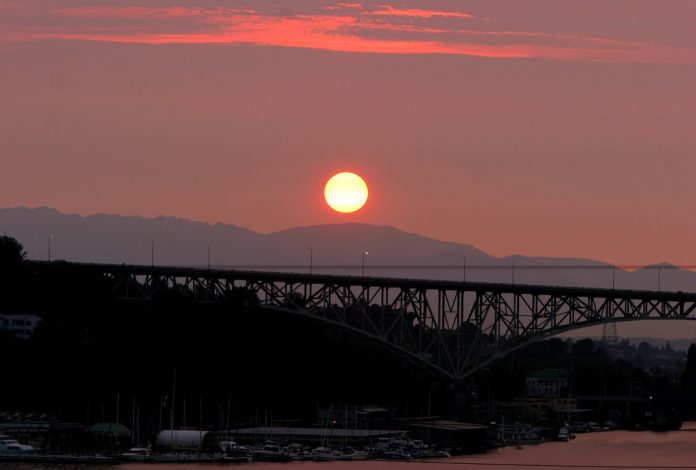
In this episode, managing editor Natalie Argerious and reporter Ray Dubicki discuss the lingering haze over Seattle and all of Western Washington. After a soaking wet spring, the region has seen less rain than the desert Southwest. This is not the grey Northwest autumn we signed up for.
The region’s smoke issues are not quite as acute as they have been in the past. These have not been the days of 400 level air quality. But the duration has been unique, with haze and smoke blanketing the region since early in September. The result has been 40 days of unseasonably warm and stagnant air.
The real toll comes on families in the line of the fires and individuals who cannot go inside. There are ongoing emergency evacuations in the Cascades, as well as services extended to shelter the unhoused from choking smoke. For many, including ourselves, the lingering haze leads to more consumptive patterns to avoid the smoke. Like driving instead of walking or finding a climate-controlled mall to hang around. These are the patterns that are changing the climate in the first place. Are there any positives to see on the other side of this?
Of course, we want to know your thoughts, opinions, and ways you’re surviving the gross atmosphere. Reach out to us at podcast [at] theurbanist.org. As always, you can find The Urbanist podcast on iTunes, Spotify, and other major platforms.
And if you are enjoying the podcast, be sure to offer a “like” or “thumbs up” on your favorite platform. It’s a great way to spread the word to new listeners.
Ray Dubicki is a stay-at-home dad and parent-on-call for taking care of general school and neighborhood tasks around Ballard. This lets him see how urbanism works (or doesn’t) during the hours most people are locked in their office. He is an attorney and urbanist by training, with soup-to-nuts planning experience from code enforcement to university development to writing zoning ordinances. He enjoys using PowerPoint, but only because it’s no longer a weekly obligation.

